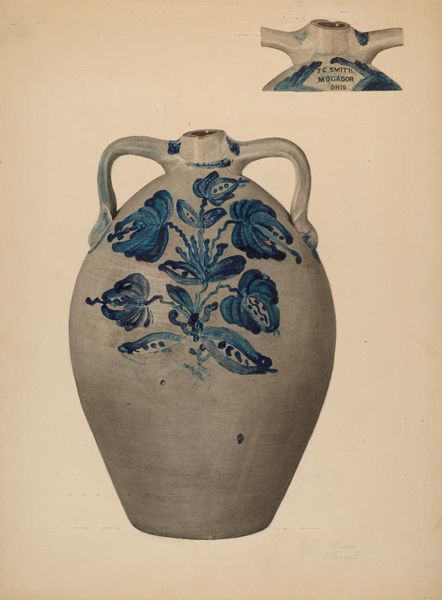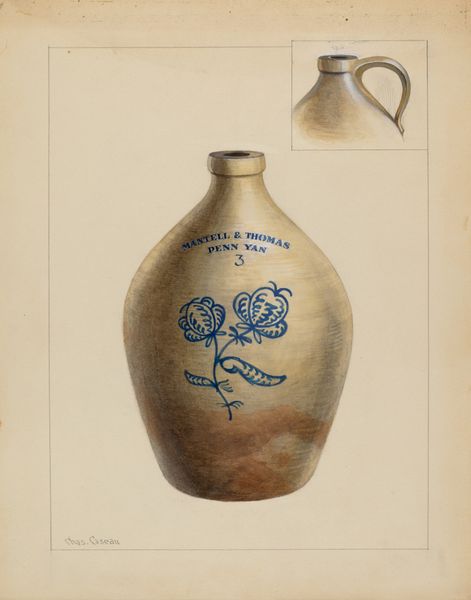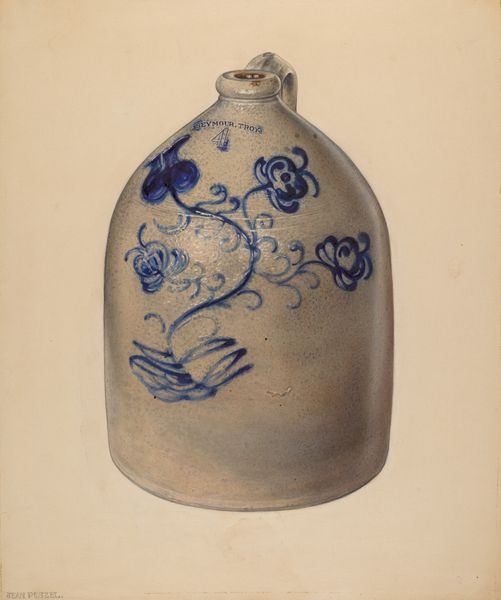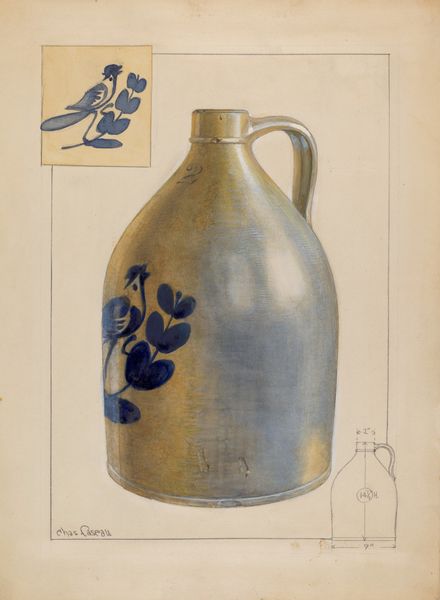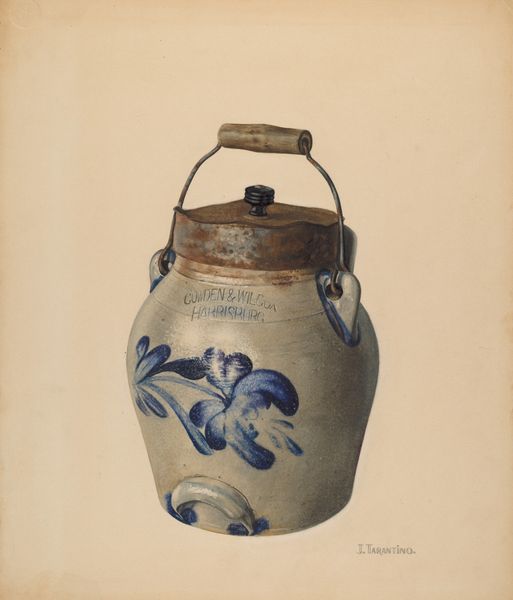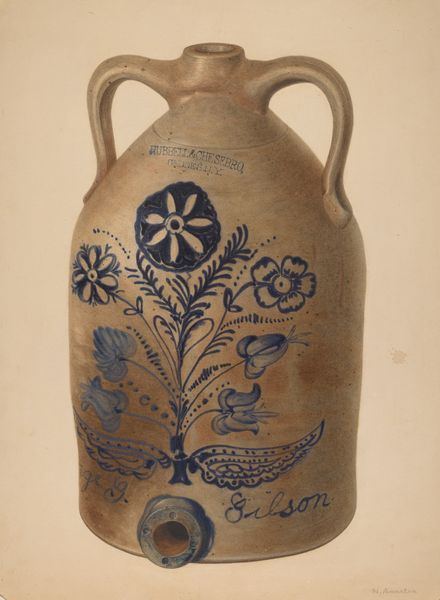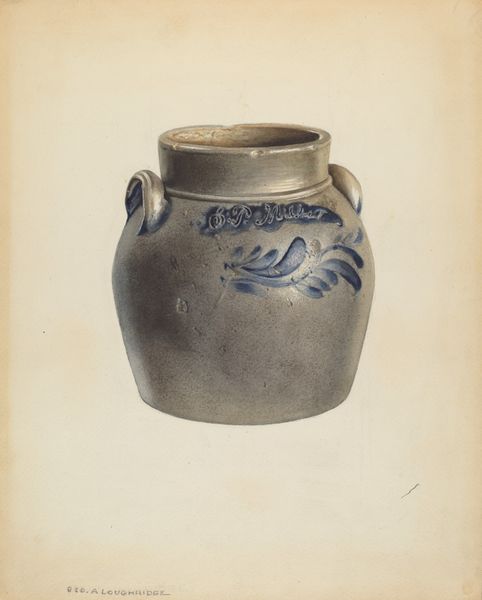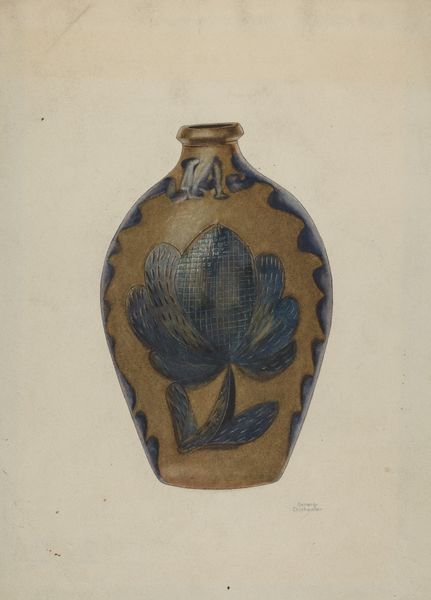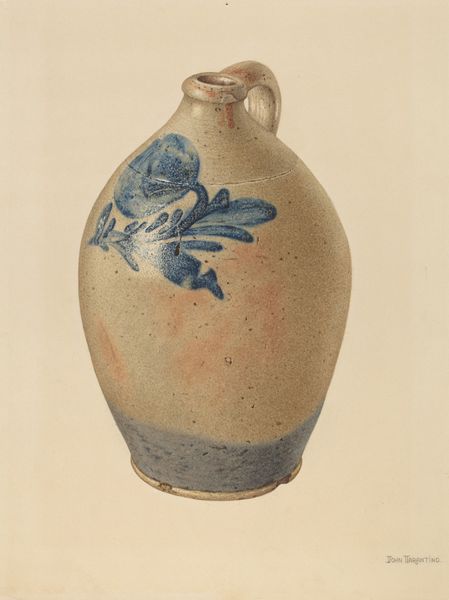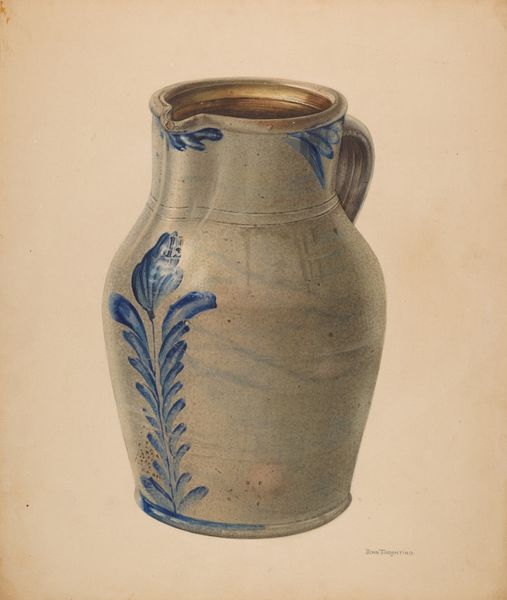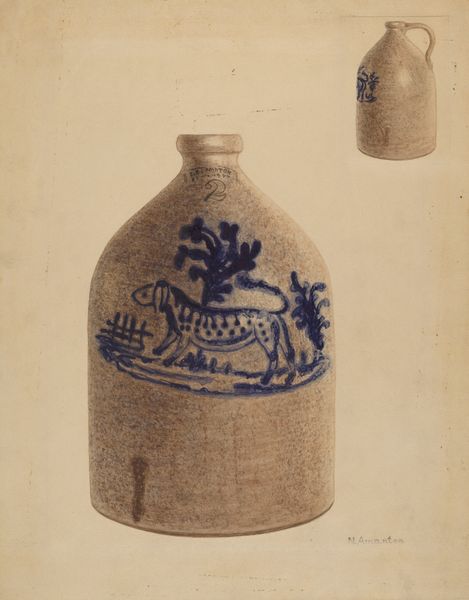
drawing, paper, watercolor
#
drawing
#
water colours
#
paper
#
watercolor
#
watercolor
Dimensions: overall: 29.1 x 22.9 cm (11 7/16 x 9 in.) Original IAD Object: 5" High
Copyright: National Gallery of Art: CC0 1.0
Curator: Looking at "Jug," a watercolor on paper from around 1936 by John Dana, what immediately strikes you? Editor: The gentle, almost muted, palette really speaks to me. There's a quiet, utilitarian beauty here, a subtle appreciation of the everyday object. It also seems like a technical drawing due to the multiple perspectives included, what were your thoughts? Curator: Well, Dana worked as a designer, and you see the remnants of that in this rendering. It's not just a depiction; it's an almost diagrammatic presentation, observing all sides of the jug from multiple perspectives. The artist considers this jug a valuable tool. Editor: Absolutely. It brings into question the socio-economic value that it held in a rural society, the role these jugs played in communal gatherings, harvests, storing water for example. What are your insights into the process itself, considering Dana's professional history? Curator: Dana's technique emphasizes the labor embedded in creating everyday ceramics, especially those meant for the domestic sphere. There is the understanding of material use which reflects consumption, accessibility, and a record of both social life and economic exchange during the Great Depression. Editor: It makes one consider who used these jugs in their daily life, too. These sorts of items were not necessarily fine china on display. Curator: Exactly, a reminder that artistic inspiration doesn't only spring from rarefied circles; it can also be found in the objects of everyday life and work. What you might call humble, are rich with historical information. Editor: So true, what this teaches us about form, function and accessibility is far more intimate. Curator: Precisely, making it an intersection where aesthetics, utility, and cultural value converge. It also gives one more pause to consider our own modern "tools".
Comments
No comments
Be the first to comment and join the conversation on the ultimate creative platform.
